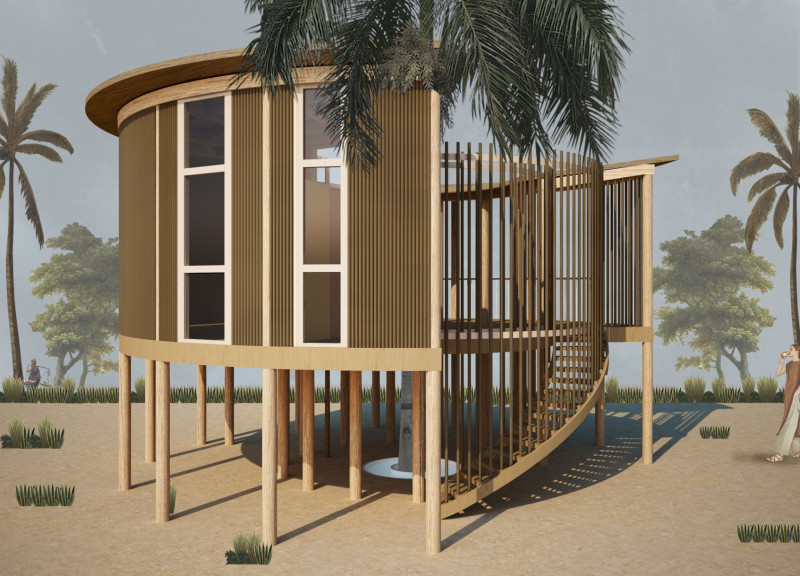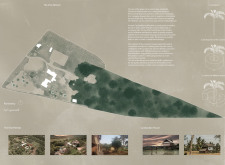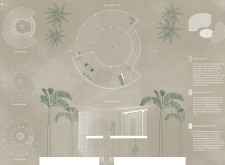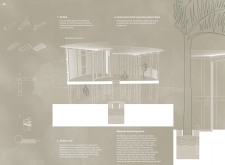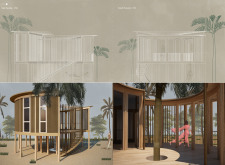5 key facts about this project
The Vine Retreat is located in the quiet rural area of Kep, Cambodia, between Phnom Vour Mountain and the southern coast. Functioning as a yoga retreat and guesthouse, it embodies an eco-friendly design approach that enhances the natural environment. The project's concept revolves around a deep connection to nature, prominently featuring a central palm tree that serves as an important aspect of the design.
Design Concept
The design embraces the integration of nature with built spaces. The palm tree is not just a decorative element; it informs the structure's layout and creates a sense of belonging within the surrounding landscape. Each area is designed to allow different experiences for guests, blending open and private spaces to foster a connection with the environment.
Spatial Organization
The retreat includes several distinct functional areas, such as the Terrace, Living Space, and Meditation Space. The Terrace acts as a connecting zone, with bamboo canes placed at various distances to form a railing that offers views of the outdoors. This openness facilitates social interactions and encourages guests to engage with the lush surroundings.
The Living Space features an open plan layout that accommodates basic needs such as food storage, water access, and sleeping quarters. This flexibility creates a comfortable environment while maintaining visual links to exterior spaces.
The Meditation Space offers a quiet area for reflection and spiritual practices. Designed around the palm tree, it creates an intimate and secluded atmosphere that supports contemplation and relaxation, enhancing the overall experience for guests.
Materiality and Sustainability
Bamboo is the main material used throughout the retreat, chosen for its suitability to the local climate and its capacity for sustainable building practices. The walls are constructed with layered bamboo culms, which are tied together to ensure stability and improve insulation. The lightweight nature of bamboo allows for creative construction techniques that keep the building secure.
Sustainability is an important aspect of this retreat. A rainwater harvesting system is integrated into the design, utilizing a sloped roof to collect rainwater and direct it to a central well. This area serves a dual purpose: it collects water and becomes a social space when dry, illustrating the practicality of the design.
Overall, the retreat is designed with a spacious Terrace that wraps around the structure. This area promotes a communal feeling among guests and strengthens their connection to nature. By raising the building on stilts, unobstructed views are created, allowing visitors to immerse themselves in the peaceful landscape.


